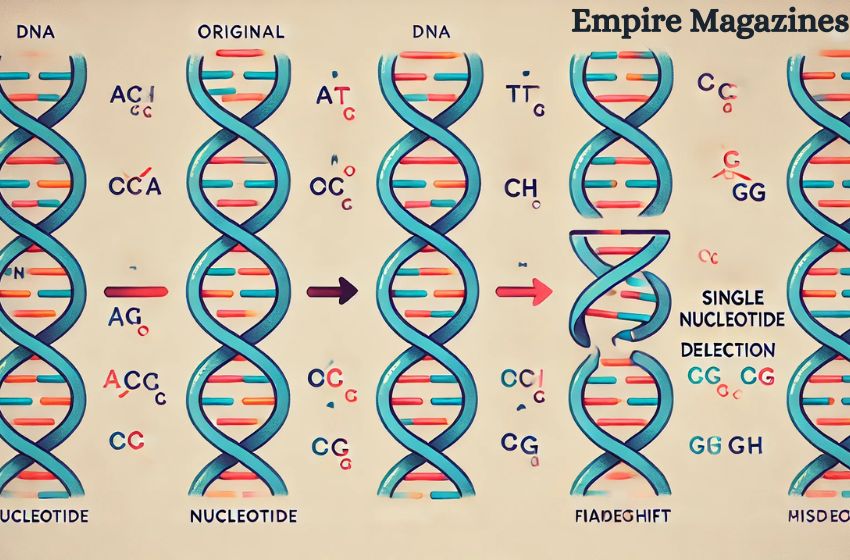What is A Single Nucleotide Deletion During DNA Replication?
A single nucleotide deletion during DNA replication is a type of genetic mutation where one nucleotide base is mistakenly left out from the newly synthesized DNA strand. In the genetic code, nucleotides are the building blocks of DNA, and they are read in groups of three, known as codons. Each codon corresponds to an amino acid, which forms proteins. When a single nucleotide is deleted, it disrupts this reading frame, causing a shift that alters the grouping of the nucleotides. This shift is called a frameshift mutation, which can lead to significant changes in the resulting protein sequence.
A single nucleotide deletion can occur due to various factors, such as replication errors, environmental damage, or spontaneous mutations. The enzyme responsible for copying the DNA, DNA polymerase, can sometimes make mistakes by slipping and missing a nucleotide during replication. If not corrected, this small error can lead to a major change in the protein produced by the gene.
How Does A Single Nucleotide Deletion During DNA Replication Occur?
The process of DNA replication is intricate and involves several enzymes to ensure the accurate copying of genetic material. During this process, DNA polymerase attaches to the original DNA strand and synthesizes a complementary strand by adding matching nucleotides. However, errors can occur when DNA polymerase slips or stutters during replication, resulting in a nucleotide being missed. This is known as strand slippage.
In cases of strand slippage, the newly synthesized DNA strand might loop out, and as a result, a nucleotide may be deleted from the sequence. This type of error is most common in regions of the DNA that have repetitive sequences, as the repeating pattern can confuse the replication machinery.
Once the nucleotide is deleted, the reading frame shifts, leading to what is called a frameshift mutation. The ribosomes, which are responsible for translating the DNA code into proteins, will read the codons incorrectly after the deletion, producing an abnormal protein sequence that may no longer function properly
Consequences of A Single Nucleotide Deletion During DNA Replication
The effects of a single nucleotide deletion during DNA replication depend on where in the gene the deletion occurs and how crucial the affected protein is for the organism. In some cases, a frameshift mutation caused by a single nucleotide deletion can have devastating effects, as the resulting protein might be completely nonfunctional or even harmful. For example, a single nucleotide deletion could introduce a premature stop codon, leading to a shortened protein that lacks essential functions.
One of the most significant outcomes of a frameshift mutation is the complete alteration of the amino acid sequence in the protein. Since the genetic code is read in triplets, the deletion shifts all subsequent codons, causing the production of an entirely different set of amino acids. This can result in severe genetic disorders or diseases if the mutation occurs in an essential gene.
In some cases, a single nucleotide deletion may have minimal or no effect if it occurs in a noncoding region of the DNA or if the deletion happens to introduce a codon that still codes for the same amino acid (a phenomenon known as silent mutation). However, such cases are rare, and most single nucleotide deletions lead to significant changes in the organism.
Repair Mechanisms for A Single Nucleotide Deletion During DNA Replication
Fortunately, cells have several repair mechanisms that can detect and correct errors made during DNA replication. One such mechanism is the exonuclease activity of DNA polymerase, which can remove incorrectly added nucleotides before they are incorporated into the growing DNA strand. This proofreading ability helps to maintain the accuracy of DNA replication, reducing the number of mutations that occur.
In cases where the proofreading fails, cells have additional repair mechanisms such as mismatch repair, which identifies and corrects errors after replication has been completed. This repair system works by recognizing distortions in the DNA double helix caused by mismatched base pairs and excising the erroneous section of DNA, allowing the correct sequence to be inserted.
Despite these repair systems, some errors inevitably escape detection, leading to permanent mutations. If the mutation occurs in a reproductive cell, it can be passed on to future generations, contributing to genetic variation and, in some cases, evolution.
The Role of A Single Nucleotide Deletion in Evolution
While a single nucleotide deletion during DNA replication can be harmful, it can also play a role in evolution. Mutations introduce variation into populations, which is a crucial factor in natural selection. Some mutations, even those caused by deletions, can confer advantages to organisms by producing proteins that are better suited to their environment. Over time, these beneficial mutations may become more prevalent in the population, driving evolutionary change.
However, not all mutations are beneficial, and many deletions result in genetic diseases or disorders. For example, frameshift mutations caused by nucleotide deletions are associated with several genetic diseases, including cystic fibrosis and Duchenne muscular dystrophy. In these cases, the deletion disrupts the function of critical proteins, leading to severe health consequences.
Conclusion: The Significance of A Single Nucleotide Deletion During DNA Replication
In summary, a single nucleotide deletion during DNA replication is a small error that can have significant consequences for the organism. This type of mutation leads to a frameshift in the genetic code, altering the amino acid sequence of the resulting protein and potentially rendering it nonfunctional. While cells have several mechanisms to repair these errors, some deletions persist and can cause genetic diseases or contribute to evolutionary processes.
The precision of DNA replication is vital for maintaining the integrity of the genetic code, but mutations like nucleotide deletions serve as a reminder of the delicate balance between stability and variation in the genome. As science continues to explore the complexities of DNA replication and mutation, understanding the role of errors like single nucleotide deletions will be essential for advancing our knowledge of genetics and disease.

